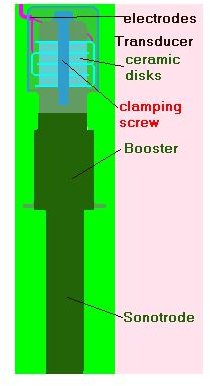Sonochemistry and sound wave generating systems
As described in a previous article, sonochemistry is the study of the effect of acoustic waves on chemical, biological, and physical systems. The sonochemistry effects are based on a physical process known as acoustic cavitation, that is the formation, growth, and the implosion of bubbles in a liquid.
Acoustic waves need to be generated for sonochemistry to be studied and used in labs and industry. A variety of systems, both at the laboratory or industrial level, have been designed and developed. But all of them have a basic configuration and parts. Let’s examine the main parts of the sound generating system.
Power supply
Acoustic waves (sound) are another form of energy such as light, heat or chemical energy. Energy has to be generated somehow (thermodynamically speaking the energy in not created nor destroyed, it is only transformed from one form to another). That is a why a power supply in needed to transform electrical energy into sound energy (acoustic waves)
The power supply produces acoustic waves at the frequency, voltage and current needed by the system. Frequency, voltage and current are permanently monitored and adjusted so the system produces consistent acoustic waves. Depending on the system and amplitude indicator may be in place to monitor and select the amplitude of the acoustic waves generated.
Transducer
The transducer, also called the converter, transforms electrical power to mechanical - as vibrations. It is a tuned system, resonant at the operating frequency. The transducer system has a cover that protects users from the high voltages generated by the system and the transducer from mechanical damage.
The main parts of the transducer are several ceramic disks (piezo-ceramic disks) that expand and contract along the axis of the transducer. Each ceramic disk has electrodes that are used to deliver the electricity needed. A high-tensile steel machine screw normally is clamped through the center of the transducer to keep the ceramic disks in place. Also a steel or titanium alloy back-block provides a mass to balance the movement of the ceramic disks and the transducer.
Booster
Some systems have a “booster.” This is used to increase the vibration amplitude and to attach all the mechanical parts of the sonochemistry system. Titanium or high-strength aluminum alloy are usually the material used for making the booster.
Sonotrode
The sonotrode is the only part unique of the system since it may acquire any shape and size depending on what is needed. Also, they can be made of a variety of materials including glass, ceramic, metals, and polymers. Titanium alloys, stainless steel, aluminum, and ceramics are usually used for industrial applications.
